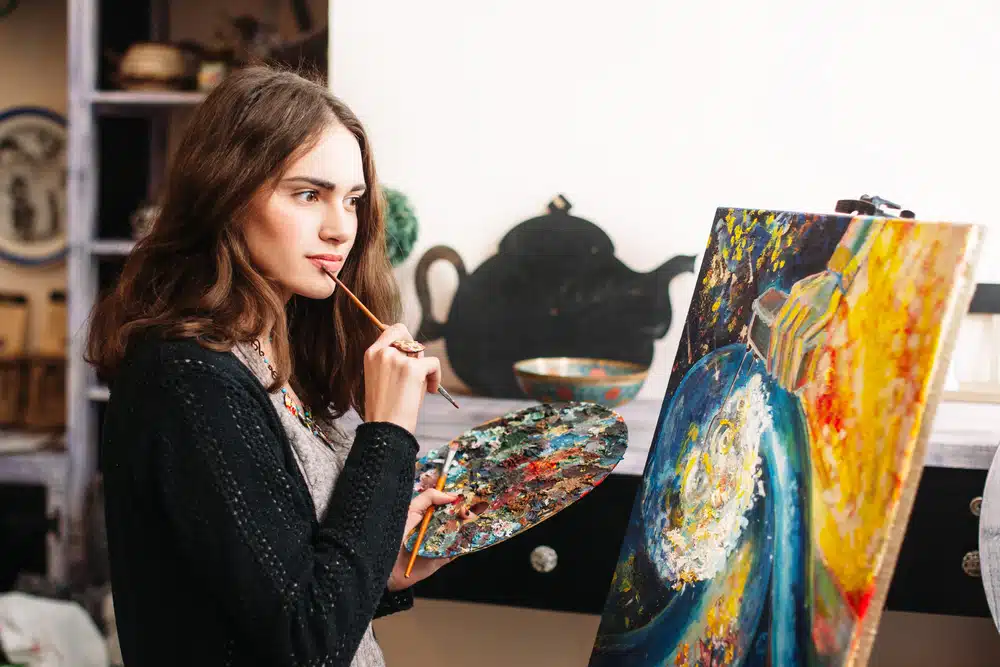The Best Art Colleges in the World
Art is a universal language, a medium that people around every corner of the globe use to express their unique thoughts, ideas, feelings, and perspectives. But for those with an eye on taking this gift to the next level, finding the right institution to nurture and hone their skills can turn this passion into a lifelong career. This article aims to guide you through discovering some of the top art colleges in the world and why they may offer you the best experience.
Understanding the Importance of Art Education
Before we dive into the institutions themselves, it’s essential to understand why art education is a critical element of our broader educational ecosystem.
Art education goes beyond simply learning how to draw or paint. It is vital in fostering creativity, critical thinking, and cultural understanding. By exploring the world of art, students are exposed to a wide range of experiences and perspectives that help shape their understanding of the world.
The Role of Art in Society
Art serves several roles in our society – a form of communication, a means to express and confront emotions, a historical lens, and a tool for social change. Art connects people across languages and cultures, allowing individuals to share their experiences and perspectives in nuanced, evocative ways.
Artists often use their work to comment on social, political, and cultural issues, challenging viewers to see the world from a different viewpoint. Through their creations, artists can provoke thought, inspire action, and ignite conversations that lead to positive change.
Studying historical and contemporary art also provides valuable insights into society’s evolution, helping us understand and respect our shared and diverse human experience. By examining the art of different periods and cultures, we gain a deeper understanding of the values, beliefs, and struggles that have shaped our world.
The Benefits of Studying Art
The study of art imparts a wide array of benefits beyond creating beautiful works. Firstly, it cultivates creativity, an increasingly valued skill in multiple fields. Through art, students learn to think outside the box, explore new ideas, and find innovative solutions to problems.
Additionally, art education enhances critical thinking and problem-solving abilities, as artists often need to conceptualize unique ideas and solutions. By encouraging students to analyze, interpret, and evaluate various artistic techniques and concepts, art education helps develop their analytical and problem-solving skills.
Moreover, art education builds observational skills, visual literacy, and hand-eye coordination. When creating art, students learn to observe the world around them keenly, paying attention to details and nuances that others may overlook. This heightened sense of observation translates into improved visual literacy, allowing students to interpret and analyze visual information more effectively.
Furthermore, engaging in artistic activities requires hand-eye coordination and fine motor skills. Whether holding a paintbrush, sculpting clay or playing a musical instrument, students develop precise control over their movements, enhancing their coordination and agility.
Art education also fosters an understanding and appreciation of cultural diversity, better-preparing students for an increasingly globalized world. By exploring different art forms and styles from various cultures, students gain insight into the rich tapestry of human expression. This exposure to diverse artistic traditions helps break down barriers, promote empathy, and foster a sense of interconnectedness among people from different backgrounds.
Lastly, making art can be therapeutic and promote overall well-being. Engaging in creative activities provides an outlet for self-expression, allowing individuals to process and communicate their thoughts, emotions, and experiences. Art can serve as a form of therapy, helping individuals cope with stress, anxiety, and trauma while promoting relaxation and mindfulness.
Criteria for Choosing the Right Art College
Once you’ve resolved to pursue art education, landing at the right institution is the next fundamental step. But how do you narrow down your choices among numerous colleges with their respective pros and cons around the globe? Here are some essential factors to consider.
Course Offerings and Specializations
Art is a broad field with various specialties ranging from painting to digital art, and your chosen college should provide the resources you need to grow in your desired area. Therefore, ensuring the college offers a wide range of courses relevant to your interests and opportunities for you to delve deeply into your specialization is crucial.
For example, if you are interested in traditional painting techniques, you may want to look for a college that offers oil painting, watercolor, and figure drawing courses. On the other hand, if you are more inclined towards digital art, you would want to find a college that provides graphic design, 3D modeling, and animation courses.
Furthermore, it’s also important to consider if the college offers advanced courses in your chosen specialization. These advanced courses can help you refine your skills and explore more complex concepts within your field of interest.
Faculty Expertise and Reputation
The reputation and expertise of the faculty significantly impact the quality of learning in an art college. Experienced faculty members with a robust career in arts can provide valuable real-world insights and guide students effectively on their artistic journey. A reputed faculty also often draws industry professionals and opportunities to the institution.
When researching potential art colleges, take the time to look into the faculty members’ backgrounds. Are they accomplished artists themselves? Have they exhibited their work in prestigious galleries or won awards for their contributions to the art world? These are essential questions to ask as they indicate the level of expertise and dedication the faculty brings.
Additionally, consider the faculty-to-student ratio at the college. A lower ratio means professors can provide students with more individualized attention and mentorship, significantly enhancing the learning experience.
Facilities and Resources
Creating art demands resources such as studios, galleries, digital technology, a library with resources about past and present art and artists, and material stores for physical skills. Art colleges that provide state-of-the-art facilities make a significant difference in nurturing an artist’s potential.
When visiting potential art colleges, pay attention to the facilities available to students. Are there well-equipped studios where you can experiment with different mediums? Are there exhibition spaces where you can showcase your work to the public? Are there computer labs with the latest software for digital art? These are all important considerations as they can significantly impact your artistic growth.
Furthermore, a comprehensive library with an extensive collection of art books, magazines, and online resources can be valuable. It can provide inspiration, reference materials, and historical context for your artistic endeavors.
Lastly, don’t forget to inquire about the availability of material stores on campus. These stores can be a convenient resource for purchasing art supplies, ensuring that you have easy access to the materials you need to bring your artistic visions to life.
Overview of Top Art Colleges Globally
Equipped with the knowledge of what to look for, let’s turn our attention to some of the world’s leading art colleges. We’ll focus on institutions in North America, Europe, and emerging powerhouses in Asia.
Regarding art education, North America boasts some of the most prestigious institutions. The Rhode Island School of Design (RISD) is renowned for its innovative approach to art and design. With a strong emphasis on interdisciplinary collaboration, RISD prepares students to tackle complex artistic challenges in today’s rapidly evolving world.
On the other hand, the Savannah College of Art and Design (SCAD) is known for its diverse range of programs and its commitment to nurturing the individual artistic voice of each student. SCAD offers a supportive environment where students can explore their creative potential.
Meanwhile, in the Great White North, Canada’s Emily Carr University of Art + Design is making waves in the art education scene. With a forward-thinking approach, the university combines traditional practices with cutting-edge digital technologies.
This unique blend equips students with the skills and knowledge needed to thrive in the ever-changing art landscape. Emily Carr University is a hub of creativity and innovation, attracting aspiring artists worldwide.
Across the Atlantic, Europe is home to some of the most renowned art colleges in the world. Central Saint Martins, located in the heart of London, is a powerhouse of artistic talent. With a rich history dating back to the 19th century, the college has produced countless influential artists, designers, and performers.
Its faculty, comprised of industry professionals and experienced practitioners, provides students with invaluable insights and mentorship. Similarly, the École nationale supérieure des Beaux-Arts in France is steeped in artistic tradition.
Founded in 1648, it is one of the oldest art schools in the world. The academy’s rigorous curriculum and emphasis on technical mastery have shaped generations of artists who have left an indelible mark on the art world.
Not to be outdone, the Royal Danish Academy of Fine Arts in Denmark is another European institution that commands respect. With a strong focus on experimentation and interdisciplinary collaboration, the academy encourages students to push the boundaries of traditional art forms. Its faculty, composed of internationally recognized artists and scholars, provides students with knowledge and guidance.
Turning our attention to Asia, the region is experiencing a rise in the prominence of its art colleges. The China Academy of Art in Hangzhou is at the forefront of this movement. With state-of-the-art facilities and a commitment to preserving and innovating traditional Chinese art techniques, the academy offers a unique educational experience. Students have the opportunity to explore the rich cultural heritage of China while also embracing modern artistic practices.
The Tokyo University of the Arts is a beacon of artistic excellence in Japan. With a history dating back to the late 19th century, the university has nurtured some of Japan’s most celebrated artists. Its comprehensive curriculum covers various artistic disciplines, including painting, sculpture, ceramics, and more. The university’s commitment to fostering creativity and creative expression has made it a top choice for aspiring artists worldwide.
Lastly, in the vibrant city-state of Singapore, LASALLE College of the Arts is making a name for itself as a leading art college in Asia. With a strong emphasis on interdisciplinary collaboration and a focus on nurturing individual artistic voices, LASALLE provides a dynamic and supportive environment for students to explore their creativity. The college’s faculty, composed of accomplished artists and industry professionals, ensures students receive the highest quality education and guidance.
What to Expect from a Top Art College
To round off our exploration, let’s talk about life at a top art college – what entails the curriculum, the opportunities the college may provide, and where it leads post-graduation.
Opportunities for Exhibitions and Internships
Top-notch art colleges regularly hold exhibitions, allowing students to showcase their work to the public and industry insiders. These exhibitions are not just confined to the campus; they often extend to local galleries and art festivals, giving students exposure to a broader audience. The thrill of seeing your artwork displayed in a professional setting is unmatched and can be a stepping stone to future opportunities.
Internships allow students to gain practical experience and make valuable connections. Top art colleges have established relationships with reputed art galleries, museums, and studios, offering students the chance to intern and learn from professionals in the field. These internships provide a glimpse into the real-world workings of the art industry, allowing students to apply their skills in a professional setting and build a network of contacts.
Curriculum and Learning Approach
Art colleges usually adopt a studio-based learning approach, allowing students to experiment, create, and grow under expert supervision. This hands-on learning is complemented by theoretical studies on art history, aesthetics, and critiques, equipping students with a well-rounded understanding of the field.
Imagine stepping into a spacious studio filled with natural light, vibrant colors, and the hum of creativity. At a top art college, this is your daily reality. The curriculum is designed to nurture your artistic talent and push your boundaries.
You can work with various mediums, from traditional paint and clay to digital art and multimedia installations. The faculty, comprised of experienced artists and educators, will guide you through the technical aspects of your craft while encouraging you to explore your unique artistic voice.
But it’s not just about creating art in isolation. Collaborative projects and group critiques are an integral part of the learning process. You’ll engage in lively discussions with your peers, exchanging ideas and receiving constructive feedback. This collaborative environment fosters a sense of community and encourages artistic growth.
How Do You Prepare a Stellar Portfolio?
First, you must understand that preparation is a marathon, not a sprint. Start by researching the specific portfolio requirements of each college you’re interested in. Some may want to see a focus on a particular medium, while others might appreciate a diverse skill set.
Once you’ve gathered this information, create a timeline. Allocate time for brainstorming, creating new pieces, and refining existing ones. Don’t forget to leave room for feedback sessions; fresh eyes can offer invaluable insights.
Importance of a Portfolio: Your ticket to the big leagues
Your portfolio is more than just a collection of your best works; it’s your ticket to the big leagues, your passport to the best art colleges in the world. It’s the tangible proof of your skills, your creativity, and your commitment to your craft.
Admissions officers sift through countless portfolios, so yours needs to make an impression quickly. A well-prepared portfolio can be the difference between getting into a top-tier institution and settling for less.
It’s the most direct way to show the admissions committee that you’re ready, serious, and have something unique to bring to their campus. So, invest the time and resources to make it the best it can be; your future self will thank you.
What to Include: Showcasing a range of skills and styles
When it comes to content, variety is your ally. The best art colleges in the world are looking for versatile artists who can adapt and evolve. Therefore, your portfolio should showcase a range of skills and styles.
Include pieces demonstrating your technical proficiency, whether in life drawing, digital art, or sculpture. But don’t stop there. Also, incorporate works that reveal your conceptual thinking and ability to convey complex ideas visually.
If you have experience in multiple disciplines, flaunt it. Show them you’re not just a one-trick pony but a multifaceted artist with a rich, diverse skill set. However, remember that quality trumps quantity; each piece should be there for a reason, contributing to the overall narrative of who you are as an artist.
Tips from Admissions Officers: Insider advice on standing out
So, you’ve got a portfolio that you’re proud of. But how do you ensure it captures the attention of the admissions officers at the best art colleges in the world? Here’s some insider advice. First, follow the guidelines. It may sound basic, but you’d be surprised how many applicants are disqualified for not adhering to the rules.
Second, include a well-crafted statement of purpose that ties your portfolio together, providing context for your artistic choices. Third, consider the flow. Arrange your pieces in a way that takes the viewer on a journey, building up to your most impactful work.
Lastly, seek feedback from mentors, alums, or professionals in the field. Their expertise can provide invaluable perspectives you might not have considered.
Ready to Turn Your Artistic Dreams into Reality? Let AdmissionSight Guide You.
You’ve journeyed through the labyrinth of selecting the perfect art college, understanding the monumental importance of a portfolio, and even gleaned insider tips from admissions officers. Now, you stand at the threshold of your future, portfolio in hand. But what if you could elevate your chances of getting into the best art colleges in the world? What if you had a seasoned guide to navigate you through the complexities of the admissions process?
That’s where AdmissionSight comes in. As experts in college admissions consulting, we specialize in transforming your artistic aspirations into a compelling application. From fine-tuning your portfolio to crafting a statement of purpose that resonates with admissions officers, we offer a comprehensive suite of services tailored to your needs. Our proven strategies have helped countless students gain admission into top-tier art colleges, and you could be next.
Don’t leave your future to chance. Partner with AdmissionSight and let’s create your masterpiece together.










































